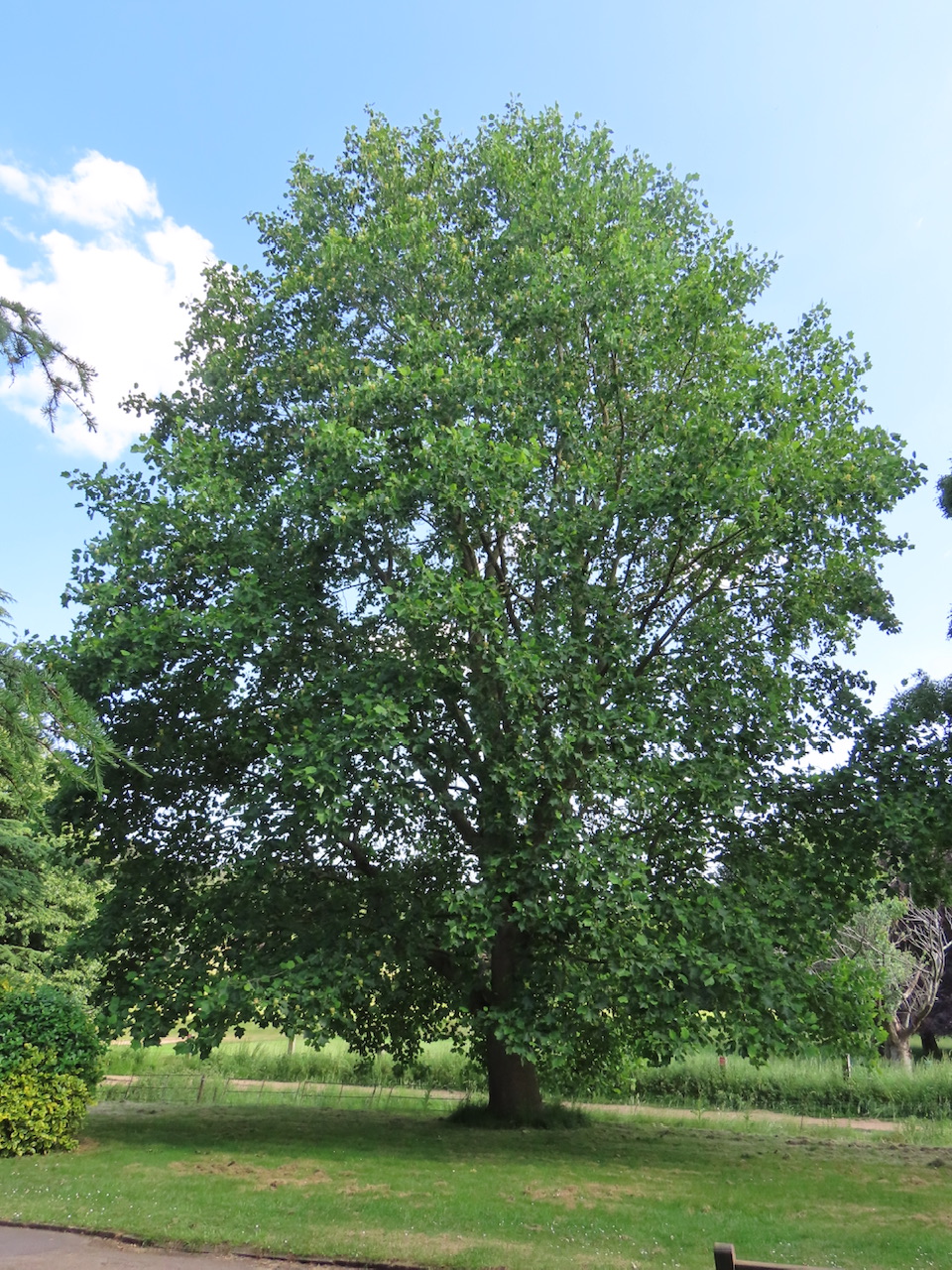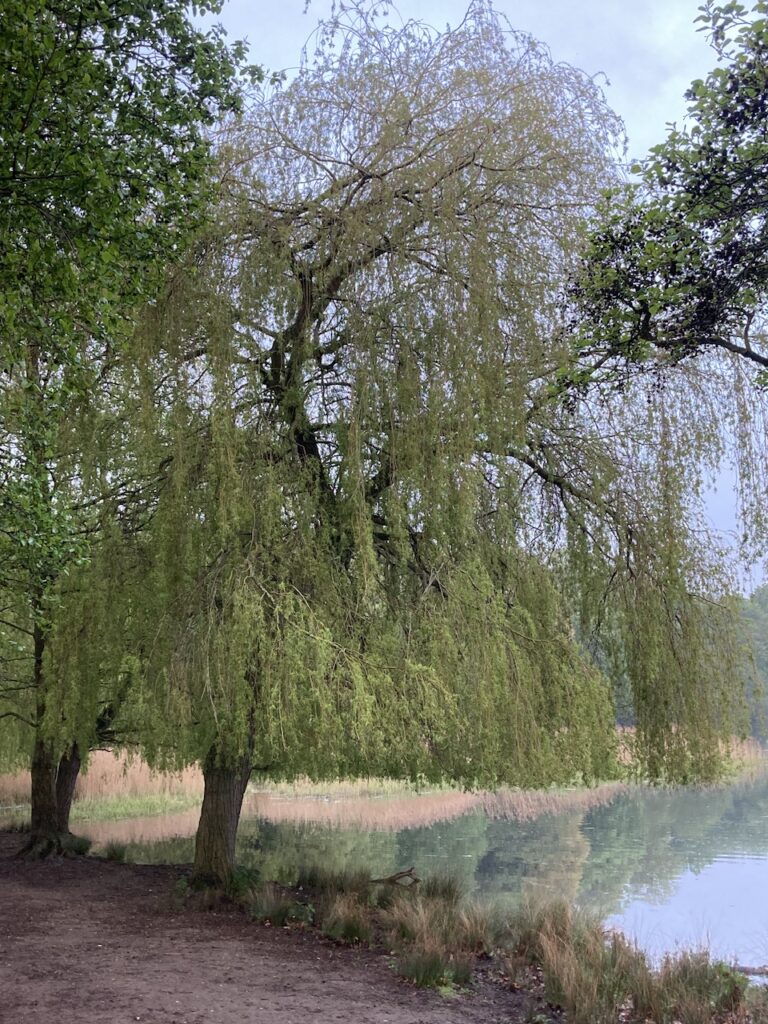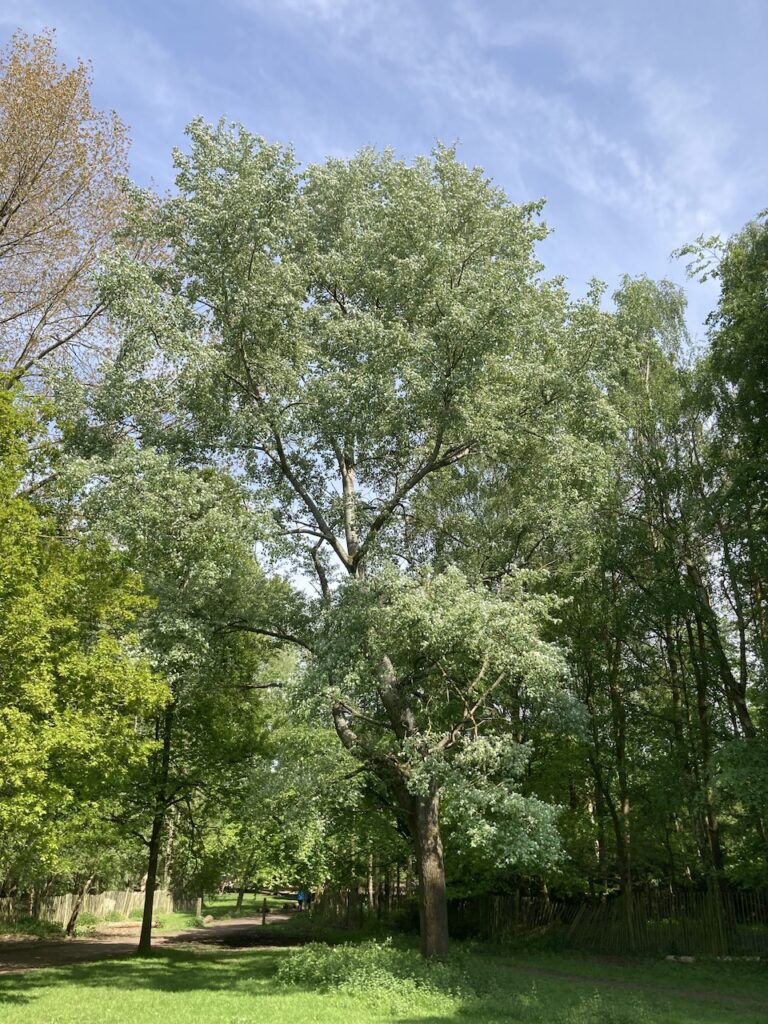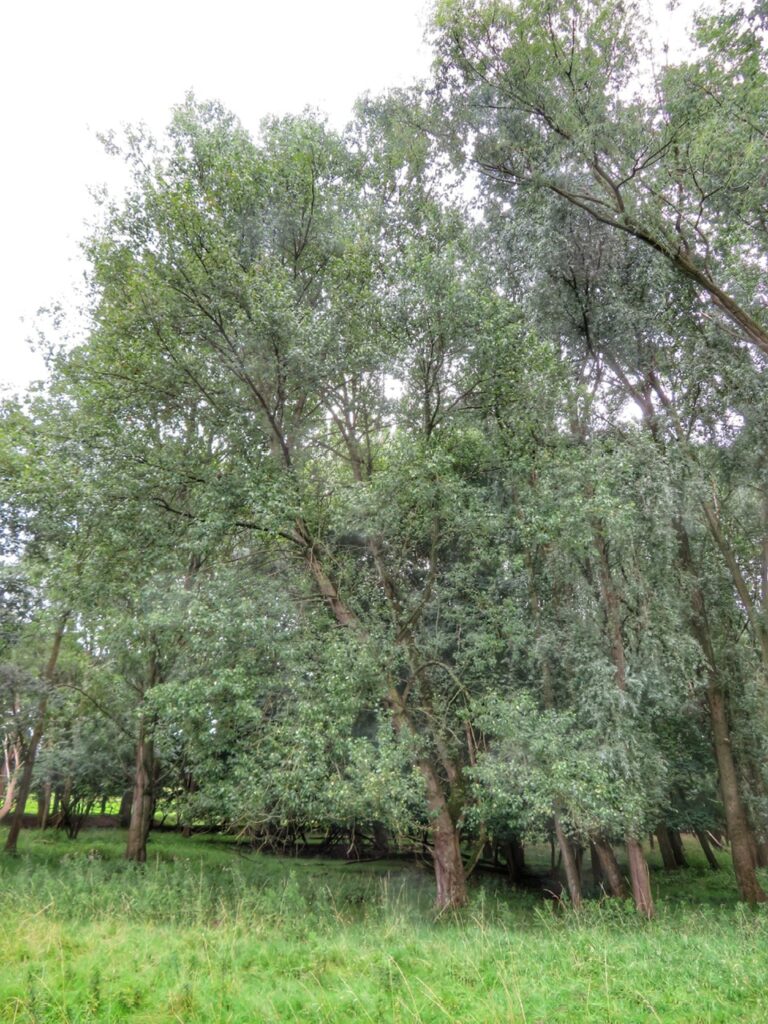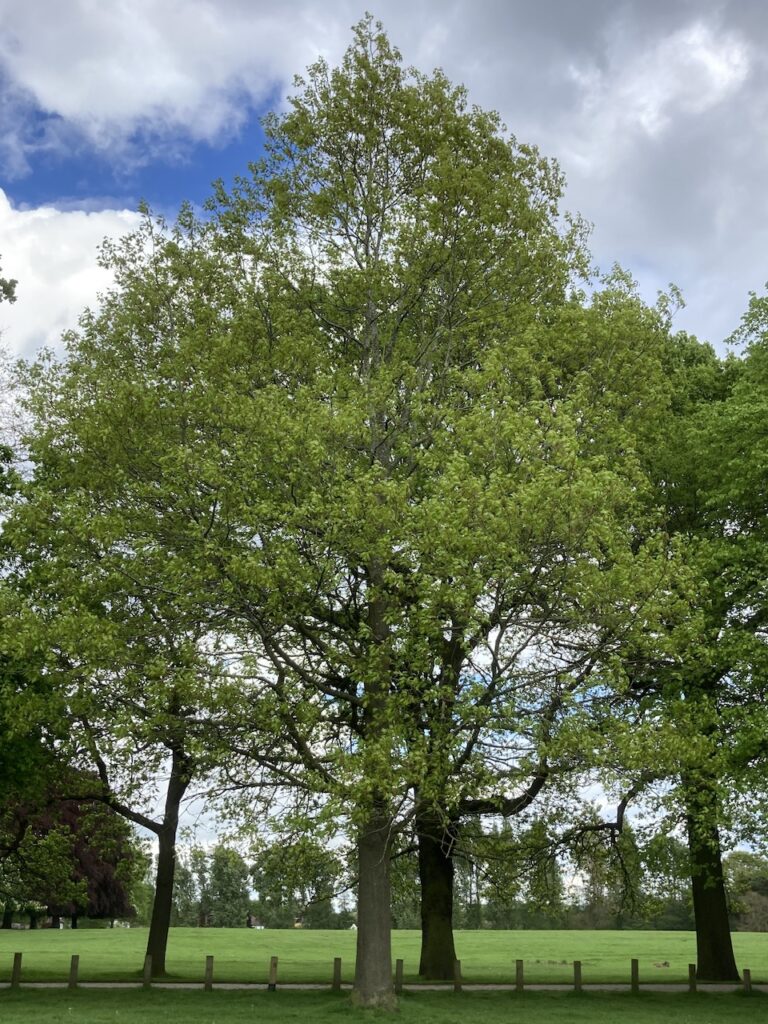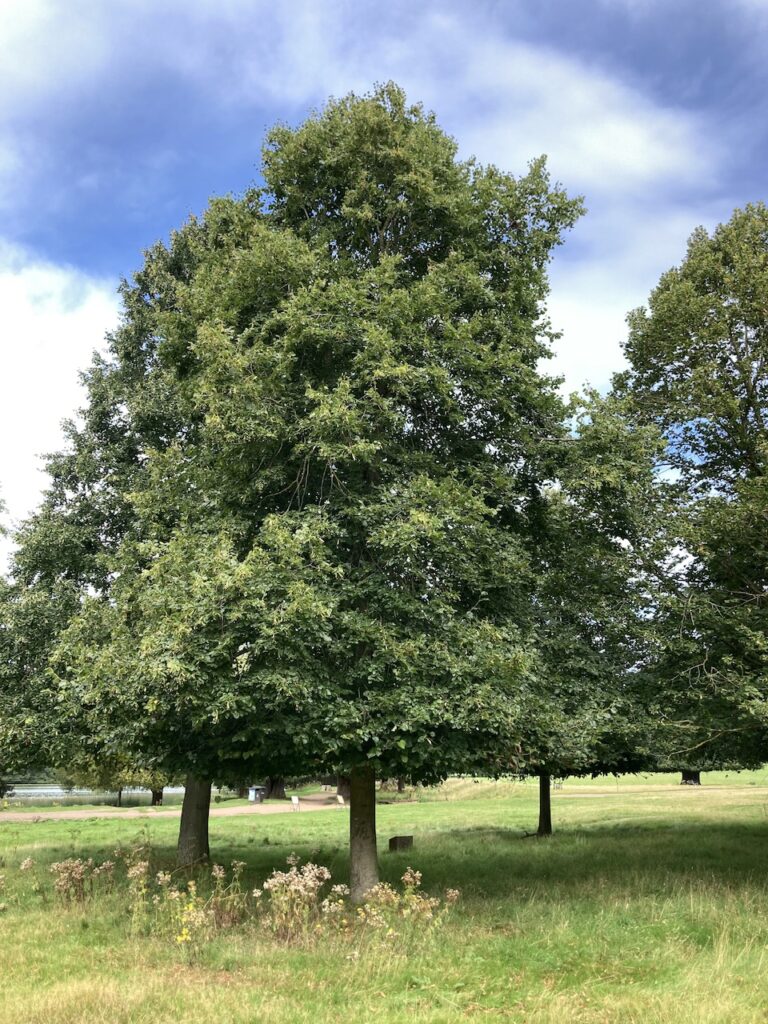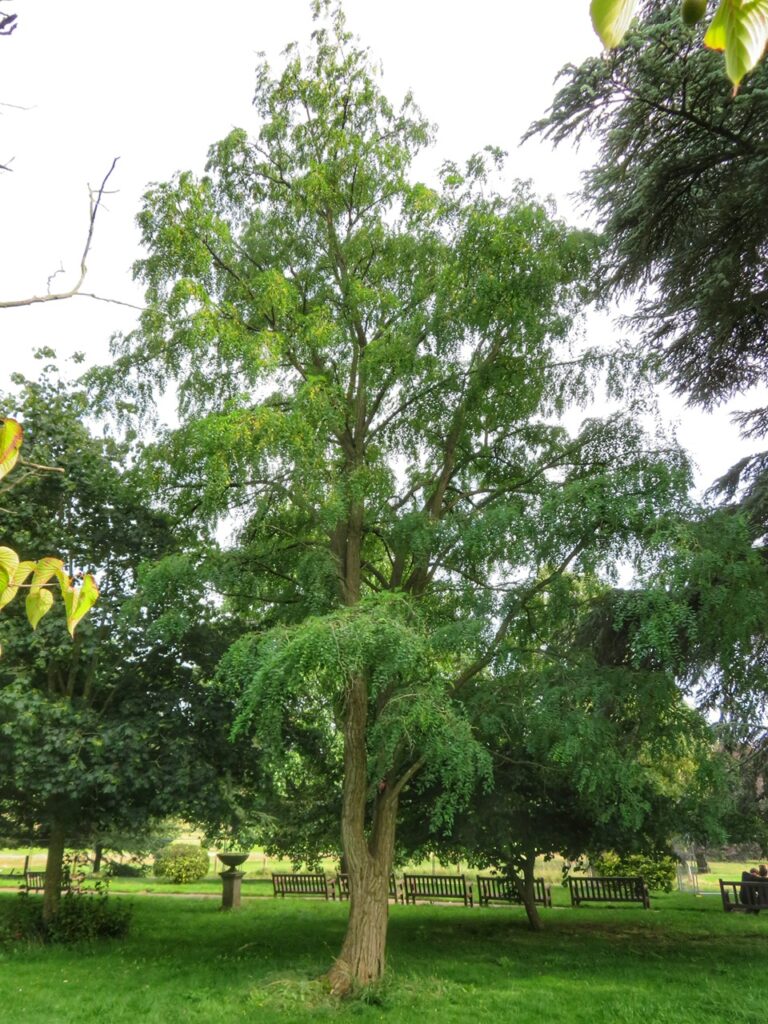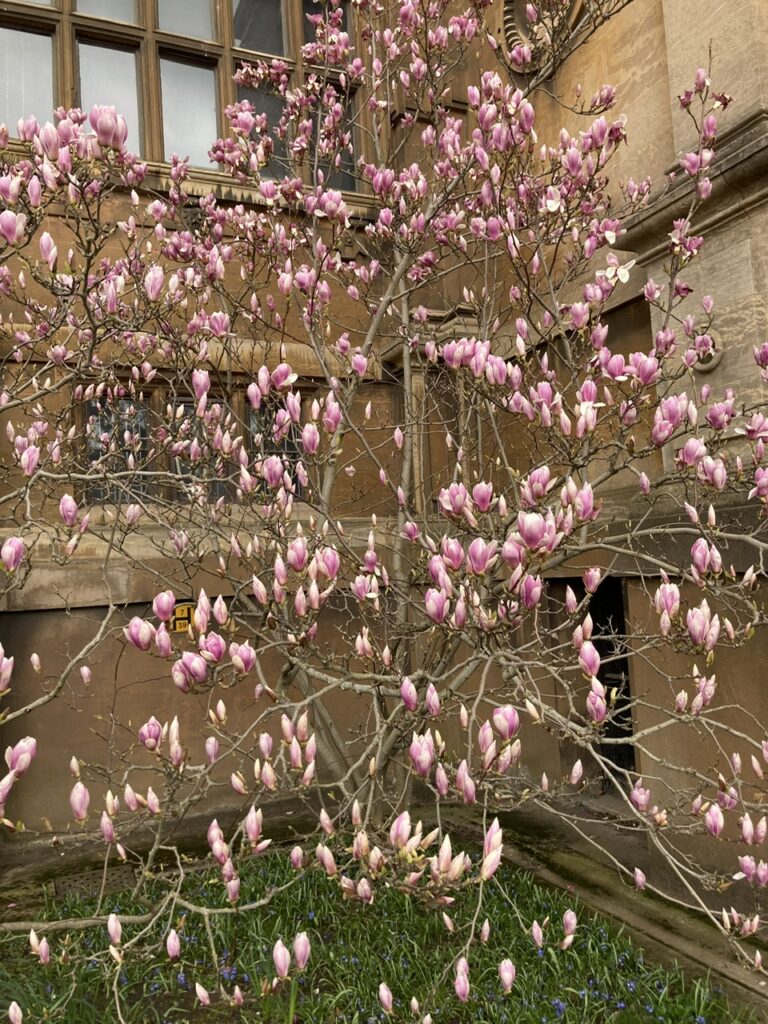The trees on this page are all members of the Rosids group of flowering plants, as are the Cherry, Whitebeams and Fruit trees in this gallery.
See also, our Rosids Gallery of Wildflowers.
Willow Family

Willows
A large number of Willows can be found in the conservation area by the lake, close to the Parkside field – an area referred to as the Willow Enclosure. Willows are water-loving trees, so they grow well here, fed by water from a natural spring.
The area was planted in 1987. The species planted came from Attenborough Nature Reserve and include:
- White Willow / Salix alba;
- Purple Osier / Salix purpurea;
- Almond Willow / Salix triandra;
- Common Osier / Salix viminalis.
Willows have narrow, elongated leaves that are usually pointed at the tips and have a finely serrated edge.
Crack Willow

Salix fragilis.
The Crack Willow has a distinctive growth habit, with thick, sturdy branches that grow upright and form a rounded crown. The bark is dark grey or brown and deeply furrowed, and the leaves are long and narrow with a glossy green colour on the upper surface and a lighter green on the lower surface. The leaves have pointed tips and are typically 3-6 inches long.
Poplar’s
Balsam Spire Poplar

Populus ‘Balsam Spire’.
The Balsam Spire Poplar is a hybrid of the Western Balsam Poplar, also known as the Black Cottonwood, which is a large deciduous tree. It can grow up to 60 meters tall and has a fast-growing, aggressive root system.
The leaves are elliptical with a crenate margin and an acute tip.
Lime Trees
Common Lime

Tilia x europaea.
Lime trees are a species of deciduous tree that is native to Europe and Asia. They are known for their attractive, heart-shaped leaves, fragrant flowers, and attractive, peeling bark.
It is a fast-growing hybrid of the Small-leafed and Broad-leafed lime, that rarely grows from seed, so naturally it is not that common, despite its name – most are cultivated.
Epicormic shoots growing from the tree’s base are common and regularly trimmed by volunteers.
It is a magnet for aphids, which eat the leaves and excrete a sticky, sugary liquid called honeydew – the sticky stuff found on your car if you park underneath one in summer.
The most common tree seen in the park.
See Tree 11 in the Mini Arboretum, as well as Lime Tree Avenue and South Avenue.
Small-leaved Lime
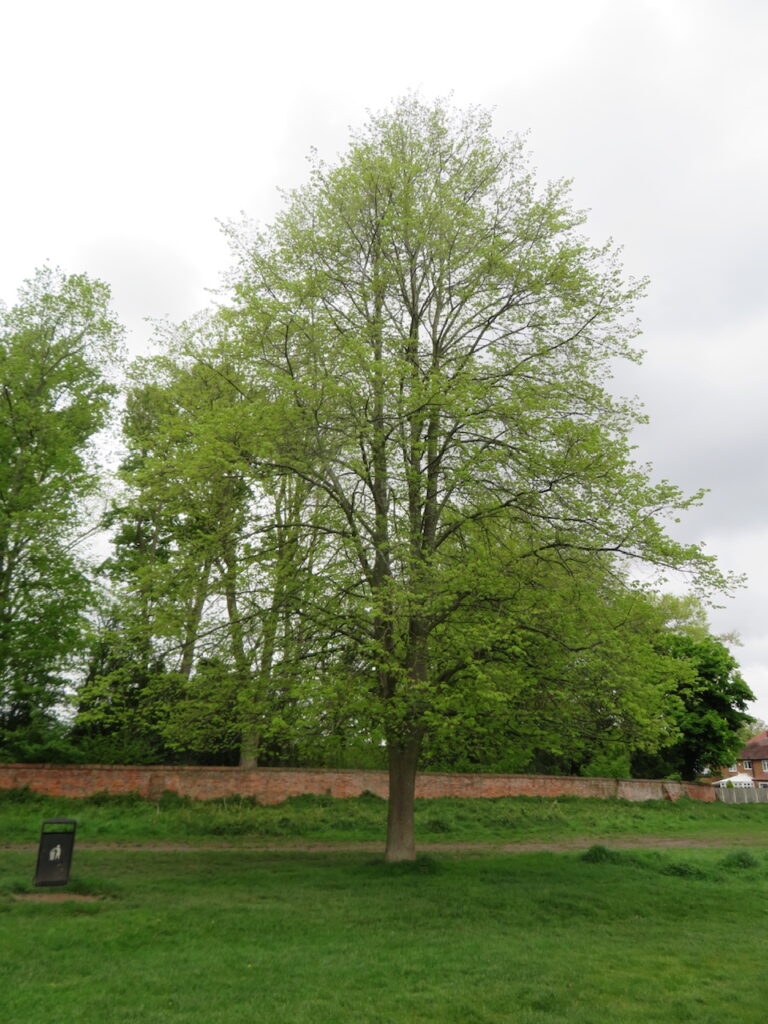
Tilia cordata.
The small, heart-shaped leaves of the small-leaved lime tree measure 5-7cm in length and are dark green on the upper surface and paler underneath.
See Tree 15 in the Mini Arboretum.
Other
Sweet Gum

Liquidambar styraciflua.
Also known as Liquidamber.
The leaves of the Sweetgum Tree are star-shaped, with five to seven pointed lobes
Tulip Tree

Liriodendron tulipifera.
Tulip Tree leaves of the tulip tree are distinct and have a unique shape resembling tulip flowers, hence the name. They are large, lobed, and bright green in colour, turning yellow in the fall. They produce showy, cup-shaped flowers that resemble tulips, hence the name “tulip tree.” The flowers are greenish-yellow with orange markings and bloom in late spring or early summer.
Persian Ironwood

Parrotia persica.
The bark of the Persian Ironwood is a smooth grey colour, with patches of cream, green, and brown that peel off in thin flakes as the tree ages. The leaves are oval in shape, with serrated edges, and turn a brilliant mix of yellow, orange, and red in the autumn.
Judas Tree

Cercis siliquastrum.
A Judas tree is a small, deciduous tree that can grow up to 10 meters tall. It has pink or red flowers that bloom in spring, and its leaves turn yellow in autumn.
Laburnum
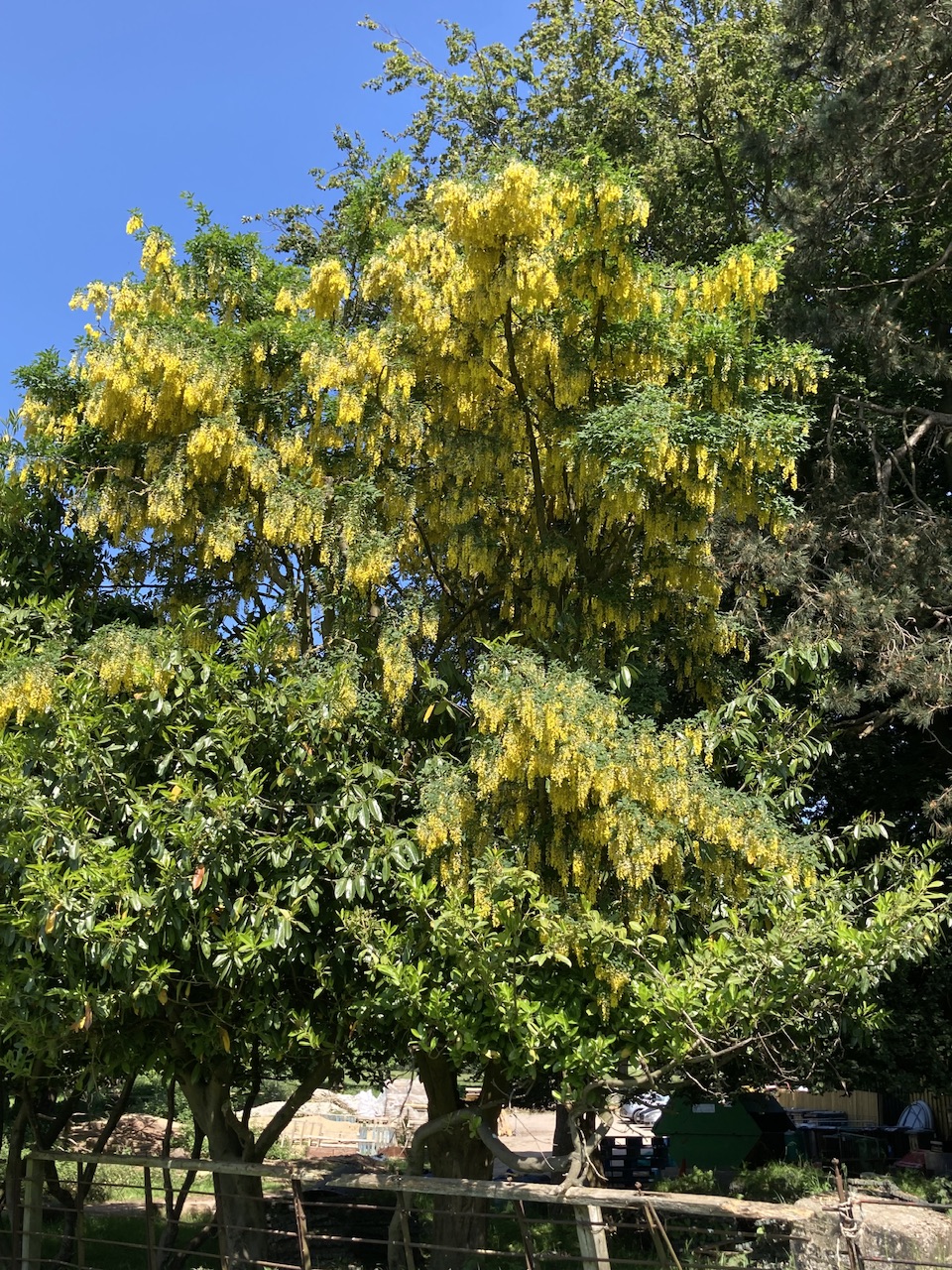
Laburnum anagyroides.
The laburnum tree is a small, deciduous tree, growing up to 10 meters tall. It has bright yellow flowers in spring, which hang in clusters. The leaves are dark green, pinnate, and up to 20 centimetres long. The bark is smooth and grey.
London Plane
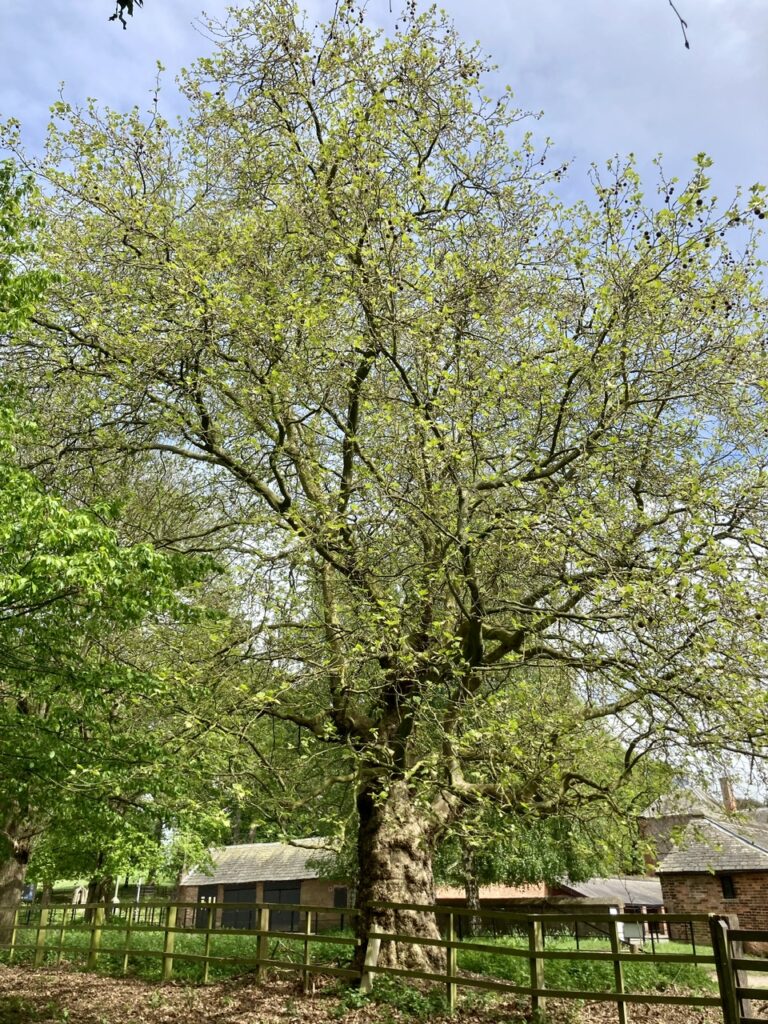
Platanus x hispanica.
The London Plane is probably a hybrid between the Oriental Plane and the American Sycamore, first created in Spain or southern France in about 1650.
Large maple-like leaves, spherical fruits on ‘strings’ hanging all winter, and yellow/brown patchy bark.
It is popular in cities, as the flaking back is good at absorbing pollution.
See also Tree 25 in the Mini Arboretum.
Photographs used in the Tree Galleries were taken in Wollaton Park and are reproduced with the original artist’s permission.
Copyright © for each picture remains with the original artist, who is duly acknowledged for their contribution.
Contributors include Colin Robbins, Wendy Martin, and Chris Golightly.
Tree descriptions were generated with the assistance of Google Bard.

